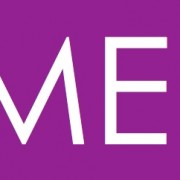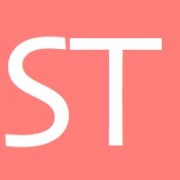Checklist: Use Metrics to Improve the Applicant Screening Funnel
Efficiency is my middle name…or I strive for it to be anyway. I prefer to follow processes, and as my co-workers know, when they don’t exist, I’ll create my own even if they are only applicable to me. As you might guess, I’m an 8 (on a scale of 1 to 10, with 10 being the most likely to follow policies and work within the rules) on the Manageability scale of the ProfileXT (PXT) assessment. I love organization, spreadsheets and color-coding!
But why?
Of course I’m biased, but I’ll say because processes beget consistency, data and therefore the ability to benchmark. And, “big data” allows you to analyze and improve, right? Well, to some extent…but so often when we have the data, we fail to actually do something with it. We forget the improvement part in the strife to collect the data in the first place. We’re proud of our shiny color-coded bar graphs, but now we’re spent from all the data analysis effort.
Good news. Another great thing about processes is that you can put one in place for executing change as a result of your data analytics! Build it in as a step in your checklist and then it will more likely get done. In this blog, I’ll discuss executing change as a result of metrics you collect during each stage of an average candidate screening funnel when recruiting potential future employees.
First Stage – Screen Employment Application Answers
This is the step in which you, as the recruiter, review application submissions for specific positions by candidates in order to deem them qualified or not qualified for the position (i.e. do their answers indicate that they meet your minimum basic requirements for the role?). With the aid of an adequate applicant tracking system (ATS), and your own previous due diligence in thoughtful question design, you can include screening questions that prompt applicants to answer in such a way that will automatically qualify or flag them. Thanks to this automation feature, your time is optimized as you take a closer look at only the applicants who have met basic minimum requirements.
Your ATS will provide you metrics that quantify how many applications are being received, as well as how many make it past this initial screening stage (among other data). But now for the evaluation and improvement part…which applicants made it through the screening question filter, but based on your own personal review of data collected from their resume or other answers, are actually not qualified after all? Ask yourself the questions below and then use your answers to enact change with the goal of firming up this stage of the recruiting process.
Lessons Learned:
- Did you include enough (or too much) information about the job itself in the job listing description? Could providing different information better set expectations with applicants about what is required and help them to self-select out of the application process if they are unlikely to have the qualifications necessary?
- Did you gather information from the resume that made it clear that the applicant did not have enough previous experience in a certain area…information that you might have collected had you already put a specific required screening question in place that would prompt the applicant to provide an answer?
- Where can you record feedback about these “misses” in terms of applicants that should have been flagged by the system? Use it as an opportunity to create additional applicant status codes/dispositions, if necessary, or record more applicant notes in your ATS.
- Did you receive enough applications to offer you a sufficient number of qualified candidates at this stage of the screening process?
- Do you need to push the job to more external niche job boards and/or social media sites? How will that impact your recruiting budget for future open requisitions? Do you need to redesign your job requisition form to prompt managers to allocate a portion of their budget to paid advertising for open jobs?
- Do you have an employee referral incentive program in place? If so, consider bumping up the incentive for hard-to-fill positions, and ensure that your applicant tracking system makes it easy for applicants to name a referring employee during the application process. If you don’t have a referral incentive program yet, start one today!
Second Stage – Conduct Phone Screens
At this stage, recruiters have narrowed down their list of resumes and now must conduct phone interviews in order to determine which of the qualified applicants will be invited for an in-person interview. A great deal of “cutting” can occur at this step, depending on the number of applicants you have, and efforts should be focused on verifying, for each interviewee, that information on the employment application is true, as well as assessing the candidate’s likelihood of being a fit for the company culture. This will also be the candidate’s first opportunity to ask you questions; and, the quality and depth of these questions will often be a factor to determining the candidate’s likelihood of progressing in the process (i.e. based on the questions asked is it evident that he/she prepared; does applicant care enough to ask questions, etc.). Select the candidates who will move on to the next step and then take pause to evaluate your efforts.
Lessons Learned:
- Which phone screen candidates should NOT have made it to this step of the process due to a lack of skills or previous experience? What about their answers or background could have been fleshed out at the point of the application?
- Or, what other phone interview questions could be revised/added in order to more quickly determine that this candidate is not a fit earlier in the phone screen conversation?
- Would the introduction of any job skill tests at the point of application minimize the misfire?
- For the stars of this round, what makes them more qualified than the others? Where did the star prospects find out about the position so that you can replicate the use of that ad source for future positions?
- Based on the questions that the interviewees ask you, what additional career-related content can your team create and share with visitors to your jobs portal? Use this technique as another way to better set expectations with future potential applicants, as well as a means to test whether interviewees take time to review resources available to them and prepare for an interview.
Third Stage – The In-House Interview
In this step, you and/or your hiring managers will meet with just a few final interviewees in person to truly understand how their past performance and experience will complement the needs of your open job. Candidates at this stage will have the right skills and experience, but now your team will need to better assess their runway potential and further clarify that their interests and motivations will allow them to thrive in the position. More exposure to this candidate during this step will allow your staff to feel more confident about whether the candidate’s personality and behavioral hard-wiring are well suited for the position and management structure in place. Depending on your company policy, you may or may not have utilized social media screening efforts to verify the candidate’s experience, values and attitude with mutual network contacts. When you are ready to extend an offer of employment, take time to gauge the effectiveness of this round.
Lessons Learned:
- Were there any final interviewees that were out of place in this round and should have been halted at the phone screen phase? If so, for what reasons?
- Reevaluate your phone screen questions to capture candidate feedback potentially related to such reasons next time.
- Use manager feedback in survey form within your applicant tracking software to record peer ratings and comments, and then look for trends that allow you to unearth not-so-obvious missteps at the point of the phone screen.
- Rather than go with your gut, is it time to introduce a cognitive and/or behavioral assessment to give you a window into more objective, validated information about the interviewee’s motivations, interests and tendencies going into the final interviews?
Fourth Stage – Point of Conditional Employment Offer
Now that you have selected a finalist, at this stage you extend a conditional offer of employment and hope for an acceptance. Depending on your organization, local laws and an evaluation of the job, you may opt to conduct a background check on the candidate with his/her consent.
Lessons Learned:
- If he/she rejects…
- What are his/her reasons for declining the offer? Based on trending in answers across various open positions, you might need to make some changes to a variety of areas such as job listing content, company benefits, compensation, management structure, time-to-hire and your overall recruitment brand.
- If he/she accepts, but then later fails on the job…
- At the point of failure, what do you know now that you wish you knew then during the interview process? Hopefully this circumstance is continuously minimized due to an ongoing attention to executing change as a result of recruiting metrics and exit interview data collected. This step incorporates all the previous considerations for tightening up the screening and interviewing process, but might also include:
- onboarding process improvement
- manager training
- an adjustment to benchmarks in place for any skills tests and employee assessments
- employee focus groups
- At the point of failure, what do you know now that you wish you knew then during the interview process? Hopefully this circumstance is continuously minimized due to an ongoing attention to executing change as a result of recruiting metrics and exit interview data collected. This step incorporates all the previous considerations for tightening up the screening and interviewing process, but might also include:
Fifth Stage – Big Picture & Future Planning
It is evident that a sizable task list can be accumulated just from paying more attention to what isn’t working in your recruiting funnel. However, building this incredibly important exercise into your routine will make your work more productive and stress-free in the future as you more quickly engage top talent to join your team and stay for the long haul. But its not over after the post mortem following the offer stage, don’t forget to apply what you learned by making adjustments to the job evaluation process for your next open positions – before they are open and you get caught up in the hustle and bustle of filling numerous jobs at once. Update those job descriptions and screening questions now. Explore new job referral sources and look at the conversion rates for your existing ones.
Stay honest by sharing your milestone goals with other stakeholders and set yourself a deadline for each lessons learned goal. These process reengineering efforts can only improve the quality of candidate you are receiving relative to your time and effort spent, as well as your time to hire. Plus, gain the ability to better predict the number of adequate candidates you should expect at each stage of the funnel based on your first-stage numbers.
How do you keep yourself on task and accountable to enacting real change based on metrics in your organization? We’d love to know!
For more information about ExactHire’s hiring solutions, please visit our resources page or contact us today.
Image credit: Lighting Sequence ![]() by Kevin Dooley (contact)
by Kevin Dooley (contact)









